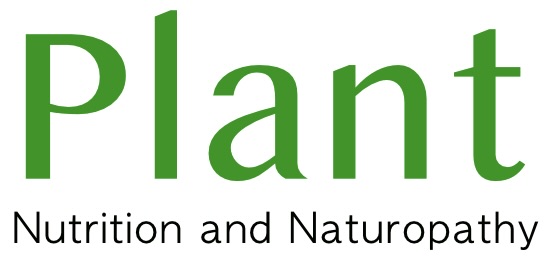What It Is and How to Manage It

Post traumatic stress disorder (PTSD) is a mental health condition that can develop after a person has experienced or witnessed a traumatic event. While PTSD is often associated with vivid flashbacks, nightmares, and emotional numbness, it also has a lesser known but significant symptom: hyperarousal. Hyperarousal can make daily life difficult and often leads to heightened anxiety, irritability, and difficulty concentrating. Understanding what hyperarousal is, how it affects individuals with PTSD, and the strategies for managing it can help those struggling with trauma symptoms regain a sense of control over their lives.
What Is Hyperarousal?
Hyperarousal is one of the key symptoms of PTSD and refers to a state of heightened physiological and psychological tension. In essence, it’s a prolonged “fight-or-flight” response triggered by trauma, causing the body to remain in a constant state of alertness. While this response can be useful in life-threatening situations, when it persists long after the trauma has ended, it becomes problematic.
Key Symptoms of Hyperarousal:
Excessive Startle Response: A person may become easily startled or jumpy, even in non-threatening situations.
Hypervigilance: A constant sense of being on edge, always scanning the environment for potential threats.
Irritability or Outbursts of Anger: Small triggers can lead to disproportionate emotional reactions, including irritability or anger.
Difficulty Sleeping (Insomnia): Restlessness and an inability to relax, often accompanied by nightmares or frequent waking during the night.
Difficulty Concentrating: A constant state of alertness can make it hard to focus or complete tasks.
The Science Behind Hyperarousal: The Stress Response System
The human body’s “fight-or-flight” response is designed to help us react quickly to threats. When we face danger, our brain triggers the release of stress hormones like adrenaline and cortisol. These hormones prepare the body for action, increasing heart rate, dilating pupils, and heightening sensory awareness.
For individuals with PTSD, this stress response system can become dysregulated. Rather than returning to normal once the threat is gone, the body stays in a heightened state of alertness. This persistent activation of the stress response system is what leads to hyperarousal symptoms (Van der Kolk, 2014).
Hyperarousal is particularly common in individuals who have experienced traumatic events such as combat, abusive relationships, childhood events, sexual assault, accidents, or natural disasters. The traumatic memories and emotions related to these events can trigger the body’s stress response long after the danger has passed.
How Trauma Affects the Brain and Body
Trauma not only disrupts the stress response system but also affects brain function. Areas of the brain involved in memory, emotion regulation, and threat detection, such as the amygdala, hippocampus, and prefrontal cortex, are altered in people with PTSD (Shin et al., 2006). These changes help explain why individuals with PTSD are often hyper-alert, easily triggered by reminders of the trauma, and struggle with emotional regulation.

Amygdala: This part of the brain is responsible for processing emotions, particularly fear. In individuals with PTSD, the amygdala is often overactive, leading to heightened fear responses.
Hippocampus: The hippocampus is involved in memory formation and context. Trauma can shrink the hippocampus, making it more difficult to distinguish between past and present threats.
Prefrontal Cortex: This part of the brain helps regulate emotions and behaviors. In PTSD, the prefrontal cortex may be underactive, leading to difficulty managing emotional responses and making rational decisions.
These brain changes contribute to a cycle where trauma survivors remain in a constant state of tension, hypervigilance, and emotional dysregulation, even when no immediate threat exists.
How Hyperarousal Impacts Daily Life
Hyperarousal doesn’t just affect a person’s emotional state—it can have widespread effects on relationships, work performance, and overall quality of life. The constant sense of danger can prevent individuals from relaxing or feeling safe, even in familiar and safe environments.
Relationships: A person with hyperarousal may become easily frustrated, angry, or withdrawn, leading to strained interactions with family, friends, or colleagues. They may have trouble trusting others or may feel threatened by seemingly harmless situations.
Work and School: Difficulty concentrating and feeling easily overwhelmed can make it challenging to succeed in professional or academic settings. The inability to focus on tasks and the constant feeling of being on alert can impair productivity and performance.
Physical Health: Chronic hyperarousal can contribute to a range of physical health issues, such as headaches, gastrointestinal problems, chronic pain, and cardiovascular problems (Yehuda et al., 2015). The long term activation of the stress response system can take a toll on the body, leading to exhaustion and increased vulnerability to illness.
Managing Hyperarousal: Strategies for Coping
While hyperarousal can be challenging, there are several coping strategies that can help manage the symptoms and reduce their impact on daily life. These strategies focus on grounding, relaxation, and restoring balance to the nervous system.
1. Mindfulness and Grounding Techniques
Mindfulness involves staying present in the moment and being aware of your thoughts, feelings, and physical sensations without judgment. Grounding techniques can help distract from overwhelming emotions and bring attention to the present, preventing the mind from spiralling into past trauma or future worries.
Deep Breathing: Slow, deep breaths can activate the parasympathetic nervous system, helping to calm the body and reduce feelings of hyperarousal.
5-4-3-2-1 Grounding Exercise: This technique involves focusing on your five senses to reconnect with the present moment. For example, name five things you can see, four things you can touch, three things you can hear, two things you can smell, and one thing you can taste.
Supermarket exercise: Imagine you are walking around the supermarket and find something that begins with each letter of the alphabet to help bring your body and mind back to the present. For example, A – apple, B – banana, C – cereal.
2. Regular Physical Activity

Exercise is a powerful tool for reducing stress and improving mental health. Physical activity helps to release endorphins, the brain’s natural mood boosters, and can regulate the stress response system. Activities like walking, yoga, or swimming can help ease tension, promote relaxation, and improve overall wellbeing (Roth et al., 2013).
3. Therapy and Counseling
Therapies such as Cognitive Behavioural Therapy (CBT) and Trauma-Focused Cognitive Behavioural Therapy (TF-CBT) are highly effective in helping individuals process trauma and manage hyperarousal. These therapeutic approaches help individuals challenge negative thought patterns, learn emotional regulation strategies, and gradually expose themselves to trauma-related memories in a safe and controlled environment (Cuijpers et al., 2016).
Eye Movement Desensitisation and Reprocessing (EMDR) is another therapeutic method used to treat PTSD. EMDR helps individuals reprocess traumatic memories and decrease their emotional charge, leading to a reduction in hyperarousal symptoms.
4. Sleep Hygiene
Chronic insomnia is a common symptom of hyperarousal. Establishing a healthy sleep routine can help improve sleep quality and reduce nighttime hyperarousal. This includes creating a calming bedtime routine, avoiding caffeine or alcohol close to bedtime, and ensuring your sleeping environment is comfortable and free of distractions.
5. Social Support
Connecting with others who understand and support you can significantly reduce feelings of isolation and anxiety. Joining a support group for trauma survivors or speaking with a trusted friend or family member can help you process emotions and feel less overwhelmed by hyperarousal.
References
Cuijpers, P., Karyotaki, E., Weitz, E., Andersson, G., van Straten, A. (2016). Psychological treatment of PTSD in adults: A meta-analysis. Journal of Affective Disorders, 189, 144-151. https://doi.org/10.1016/j.jad.2015.09.035
Roth, T., Jefferson, C., & Daffner, A. (2013). The effects of exercise on insomnia in PTSD: A review of the literature. Journal of Clinical Sleep Medicine, 9(10), 1069-1075. https://doi.org/10.5664/jcsm.3164
Shin, L. M., McNally, R. J., & Kosslyn, S. M. (2006). The neurocircuitry of fear, the amygdala, and PTSD. In Posttraumatic Stress Disorder: From Theory to Practice (pp. 104-122). Wiley. https://doi.org/10.1002/9780470748483.ch8
Van der Kolk, B. A. (2014). The Body Keeps the Score: Brain, Mind, and Body in the Healing of Trauma. Viking.
Yehuda, R., Daskalakis, N. P., & Flory, J. D. (2015). Mechanisms underlying traumatic stress: Implications for understanding PTSD. Trauma, Violence, & Abuse, 16(3), 302-313. https://doi.org/10.1177/1524838015578922
